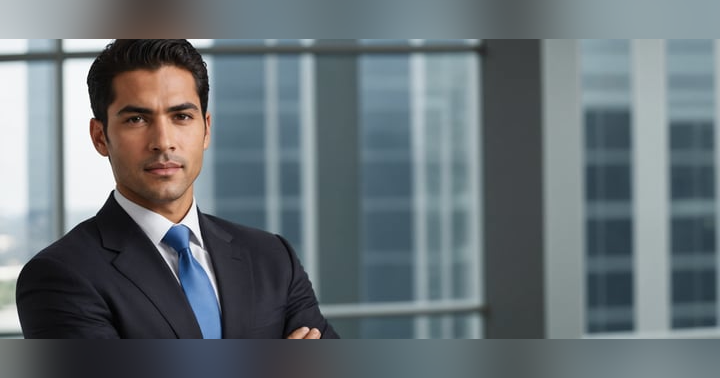Daddy in Gay Culture: Emotional Connection, Mentorship, and Affection

Who’s Your Daddy?
In gay culture, the term "daddy" has evolved far beyond its literal meaning, embodying an archetype that blends affection, admiration, and complex power dynamics. Often used to describe an older, confident, and nurturing figure, the "daddy" archetype carries an air of authority and charm that resonates deeply within the LGBTQ+ community. While frequently misunderstood or reductively linked to “daddy issues,” its meaning is much more nuanced, symbolizing strength, security, and emotional connection.
Sal Zambito, a former Wall Street executive and contestant on season two of OUTtv’s For the Love of DILFs, sheds light on the richness of this archetype. For him, the term "daddy" transcends physical appearance or age and instead represents grounded masculinity, dependability, and a celebration of lived experience. As Sal explains, “I’m a daddy in all senses of the word. I’ve experienced a lot—from the filth of Folsom to partying in a tuxedo at the Royal Casino in Monaco.” Far from being rooted in stereotypes, the "daddy" figure fosters care, connection, and mentorship, offering a dynamic presence that can enrich and strengthen queer relationships.
The Evolution of the Daddy Archetype in Gay Culture
The origins of the term "daddy" date back centuries, with its first recorded use in 1681, when it was used by sex workers to refer to older male clients or protectors. By the 1920s, the term appeared in blues music and African American Vernacular English, often describing older, affluent men or "sugar daddies." In the 1970s, the gay leather subculture embraced and popularized the term "leather daddy," solidifying its place within queer lexicon.
Today, the term continues to evolve, describing men—typically middle-aged—who exude confidence, authority, and a nurturing nature. Beyond its sexualized connotations, the daddy archetype is rooted in maturity and stability, embodying qualities of care and guidance. Sal highlights this dynamic, noting that when relationships built on these roles are mutually understood and balanced, they can be deeply fulfilling. The archetype, therefore, represents not just physical attraction but also a celebration of experience and emotional security.
Representation and Shifting Narratives in Media
The portrayal of daddies in LGBTQ+ media plays a significant role in normalizing and celebrating the diverse identities within the queer community. Shows like For the Love of DILFs highlight not only the sexual appeal of the daddy archetype but also the emotional and relational depth that underpins these dynamics. Sal observes how increased representation in media fosters acceptance, challenging stereotypes and offering a more inclusive perspective on age and attraction. “The more representation we have on every media, every medium, every platform, is the better for everybody. It's just better for everyone,” he adds.
The notion of daddies in gay culture challenges broader societal narratives about aging. While mainstream culture often sidelines older individuals, gay media and spaces are gradually embracing diverse representations of age, fostering camaraderie and highlighting the strength of intergenerational connections. This visibility is crucial in combating ageism, which affects both queer and mainstream communities, and sparks important conversations about relationships, power dynamics, and emotional reciprocity. By incorporating these unique dynamics into traditional dating show formats, these media forms provide a platform for exploring greater diversity within the LGBTQ+ community.
Emotional Depth in the Daddy-Boy Dynamic
While the erotic undertones of the daddy-boy dynamic are often highlighted, its significance goes far beyond physical attraction. At its core, this relationship fosters mutual growth, with older partners offering mentorship and life wisdom, and younger partners contributing energy and fresh perspectives. This mutual exchange creates spaces where individuals feel seen, validated, and encouraged to embrace their authentic selves.
Sal's reflections on his personal experiences illustrate the resilience and strength often embodied by the daddy archetype. Living through pivotal moments in LGBTQ+ history, such as the AIDS crisis, has shaped older gay men into symbols of survival and wisdom. These shared experiences allow for powerful connections between generations, bridging gaps in understanding and creating opportunities for mentorship.
This dynamic also challenges societal attitudes toward aging. While mainstream culture often sidelines older individuals, gay spaces and media have begun celebrating age as a symbol of strength, sophistication, and authenticity. The daddy-boy relationship, when rooted in respect and emotional reciprocity, exemplifies the transformative potential of queer love and connection. As Sal states, “When it’s the right two people, and it’s a good fit, and everybody knows their role, it can actually be really great.”
Embracing the Power of the Daddy Archetype
The daddy archetype in gay culture represents far more than a label or stereotype. It celebrates emotional maturity, resilience, and the power of lived experience, fostering connections built on mentorship, care, and mutual understanding while challenging societal norms and offering a more inclusive view of masculinity and relationships.
For the LGBTQ+ community, the daddy archetype symbolizes both personal growth and collective strength, encouraging authenticity and mutual support to create spaces where individuals can thrive. As Sal puts it, embracing who you are and finding the right connection can be truly transformative: “You express who you are and enjoy yourself and express what you need, and don’t compromise. And then you find the right person to click with.”
In celebrating the daddy archetype, gay culture honors individuality while fostering a more empathetic and inclusive community. "Daddy" represents not only a romantic figure or mentor but also a symbol of resilience, embodying the rich complexity of queer identity. Whether we see ourselves as daddies, boys, or somewhere in between, there is always room to grow, teach, and learn from one another. By embracing emotional maturity and authentic self-expression, we create spaces built on mutual respect, understanding, and care—foundations that strengthen the LGBTQ+ community as a whole.
And remember: every day is all we have, so you've got to make your own happiness.
For more information on this topic, listen to Episode 137. Who’s Your Daddy? (with Sal Zambito).
Tune into your favorite podcast player every Tuesday for new episodes of A Jaded Gay.


















